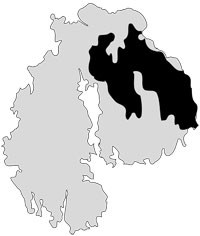
NPS photo by Brady Richards WildfireWildfires can be started by many different causes. This includes lightning, lava, and even people. Most wildfires in the United States are caused by humans. Every fire, every time, gets a thorough review once the fire is discovered. Multiple factors determine the response fire managers take on a wildfire once it is discovered. There is a desire to categorize a fire as "suppression" or "non-suppression" but frequently it's somewhere in the middle and managers take a variety of actions on a wildfire based on what's outlined in a fire management plan. 
NPS photo by Brady Richards Prescribed FireA prescribed fire is ignited by fire managers after careful planning, under a set of conditions that must be met prior to ignition, and is carefully monitored. Prescribed fires are carried out for very specific purposes or objectives and may be used to manage certain types of natural and cultural resources. Can you spot the differences between before a prescribed burn (left) and after a prescribed burn (right)? 

Left image
Right image

History of Wildland Fire at AcadiaWildland fire has forever shaped the landscape, from the earliest lighting strike to the use of fire as an agricultural tool by ancestral native peoples. This was especially true during and after the widespread Fire of 1947 which blanketed much of the island in flames.Historic fire towers once dotted this landscape, and in the case of Beech Mountain fire tower, still do. In the past, people used these fire towers to spot wildland fire and supress it. Today, the National Park Service Wildland Fire Program has changed the way we view wildland fire. Fire has become an important part of how we manage the landscape at Acadia. 
NPS photo by Brady Richards Fire Management Program
Some of the activities carried out by the fire management program include:
Mobilization of park and other New England Fire Management firefighters to out-of-state fires is coordinated and directed by the fire management staff. This mobilization service is also provided to wildland firefighters from other federal agencies in the area, including the Bureau of Indian Affairs and the U.S. Fish and Wildlife Service, and to local Wabanaki tribes. The fire management program is small and relies heavily on the local fire departments for help. Therefore the fire management staff maintains agreements with every adjacent fire department throughout the zone for mutual aid response to wildland fires. These programs protect the lives of park staff, visitors, and neighbors; provide wildland and structural fire protection to the 35,500+ acres of land and 200+ buildings that make up Acadia National Park; and assist ten other National Park Service units in the protection of their people and resources from fire. |
Last updated: July 10, 2024
